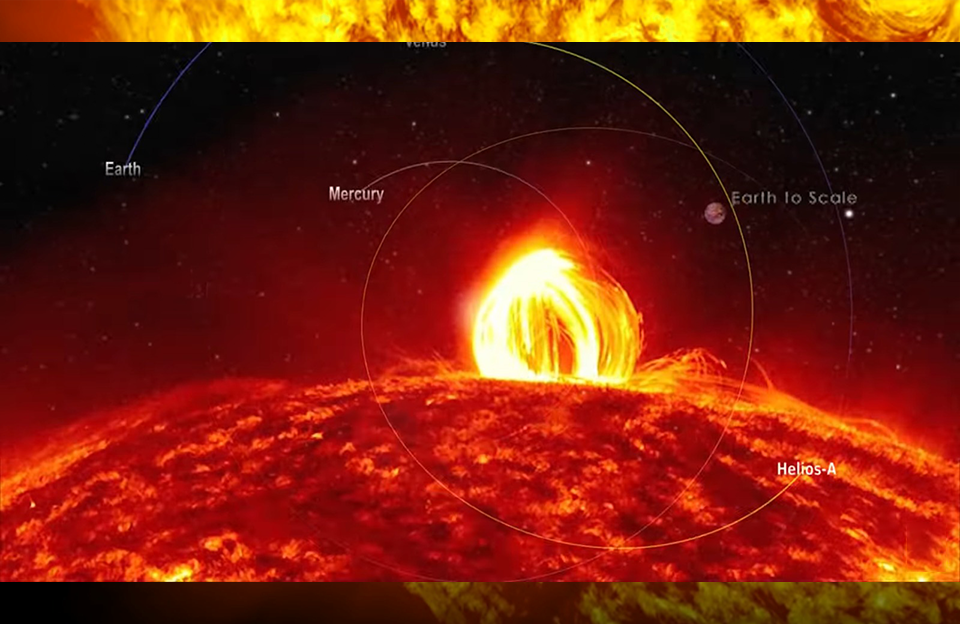The Sun: From Ancient Myths to Modern Science
The Sun has captivated the human imagination for millennia, inspiring awe, reverence, and a deep desire to understand its nature. From the ancient Egyptians who worshipped the Sun god Ra, to the Romans who envisioned the Sun god Helios traversing the sky in a four-horse chariot, the Sun has been the subject of countless myths and legends throughout history.
As our understanding of the universe has evolved, so too has our perception of the Sun. No longer the realm of gods and mythical beings, the Sun has become the subject of rigorous scientific inquiry, with researchers and space agencies around the world working tirelessly to unravel its secrets.
Unraveling the Mysteries of Solar Winds
One of the key drivers behind the exploration of the Sun is the phenomenon of solar winds. These powerful streams of charged particles that emanate from the Sun’s surface can have a profound impact on our planet, affecting everything from communication systems to the very fabric of life itself.
In the 1970s, the Helios 1 and Helios 2 spacecraft were launched as a joint venture between the United States and Germany, with the goal of studying the solar winds in greater detail. These pioneering missions provided a wealth of information about the Sun’s magnetic field and the behavior of the solar winds, paving the way for future advancements in our understanding of this critical phenomenon.
However, as the Helios spacecraft demonstrated, there was still much to be learned about the solar winds and their effects on our planet. The need for a more comprehensive and up-close study of the Sun became increasingly apparent, leading to the development of the Parker Solar Probe.
The Parker Solar Probe: Pushing the Boundaries of Solar Exploration
Named after the renowned scientist Eugene Parker, who first proposed the theory of supersonic solar winds, the Parker Solar Probe is a groundbreaking mission that has taken solar exploration to new heights. Launched in 2018, the Parker Solar Probe is designed to venture closer to the Sun than any previous spacecraft, with the goal of unlocking the mysteries of the solar winds and their impact on our planet.
One of the key challenges facing the Parker Solar Probe is the extreme heat and radiation it must endure as it approaches the Sun. With temperatures reaching over 1.7 million degrees Celsius in the Sun’s corona, the probe’s Thermal Protection System (TPS) must be able to withstand the intense heat and protect the sensitive instruments within.
Despite these formidable challenges, the Parker Solar Probe has already begun to yield unprecedented insights into the Sun’s behavior. By taking detailed measurements of the solar winds and the Sun’s magnetic field, the probe is helping scientists better understand the complex processes that drive these powerful phenomena.
The Sun: A Boundless Source of Energy
As our understanding of the Sun has grown, so too has our appreciation for its potential as a source of renewable energy. The concept of harnessing the Sun’s power from space has been around for decades, with the idea of placing solar panels in orbit to capture and transmit energy back to Earth first proposed by the American biochemist Isaac Asimov in 1941.
Today, this vision is closer to becoming a reality than ever before, with China leading the charge in the development of space-based solar power. By placing vast arrays of solar panels in orbit, these ambitious projects aim to harness the Sun’s boundless energy and transmit it to Earth through laser or microwave beams, providing a clean and reliable source of electricity.
As the world grapples with the pressing challenges of climate change and the need for sustainable energy solutions, the potential of space-based solar power has never been more compelling. By tapping into the Sun’s vast reserves of energy, we may be able to not only power our planet but also safeguard its future for generations to come.
Unlocking the Secrets of the Solar System
The Sun’s influence extends far beyond our own planet, shaping the very fabric of the solar system itself. As the largest and most dominant body in our celestial neighborhood, the Sun’s gravitational pull holds sway over the eight planets, countless moons, and countless other celestial objects that orbit it.

But the Sun’s role in the solar system goes beyond its gravitational influence. It is also the source of the water and other essential elements that have shaped the planets and moons around it. Through the bombardment of meteorites and comets, the Sun has played a crucial role in seeding the solar system with the building blocks of life, from the icy mountains of Mars to the vast oceans of Earth.
As we continue to explore the solar system, the Sun’s central role in its formation and evolution will undoubtedly remain a focus of intense scientific inquiry. From unraveling the mysteries of the solar winds to understanding the Sun’s role in the emergence of life, the quest to understand our nearest star is one that will captivate and inspire generations of scientists and space explorers to come.


